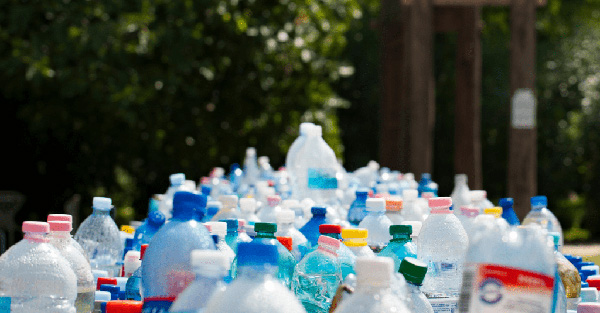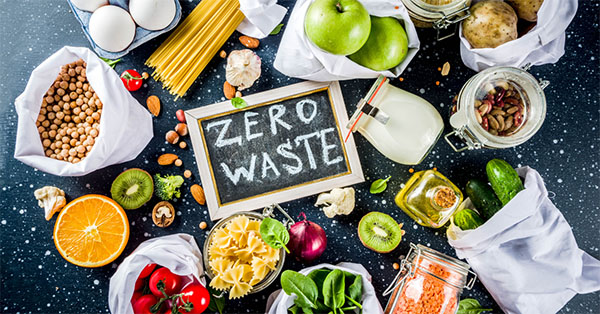Zero waste is about embracing a circular economy mindset and setting new goals for how we live in the world. The zero-waste concept takes the “reduce, reuse, recycle” mantra to a whole new level. In a zero-waste city, trash would never go to landfill or incinerators. Instead, trash would be reabsorbed into the system as a resource, creating a society that functions in a truly circular and sustainable way – a society without waste. Several cities all over the world now have clear zero-waste goals as part of their municipal waste management policies. And the increasing digitalization of waste management practices is crucial in our transition to a zero-waste world.
Driving Effective Zero Waste Programs with Smart Sensors
But what exactly is zero waste? And how can smart sensors and data-driven waste management help cities achieve their zero waste goals?
What is Zero Waste?
Communities across the globe define the term “zero waste” in a variety of different ways. The Zero Waste International Alliance defines it as:
“The conservation of all resources by means of responsible production, consumption, reuse, and recovery of products, packaging, and materials without burning and with no discharges to land, water, or air that threaten the environment or human health.”
In other words, zero waste is all about emulating sustainable and natural cycles which turn waste into resources for others to use.
You might be thinking that zero waste is just another word for recycling. But zero waste goes far beyond just converting waste into reusable materials. Zero waste involves the entire product life cycle, including product design and materials management. Zero waste aims to:
- Extend the lifetime of products
- Reduce the volume and toxicity of product materials and waste
- Eliminate negative environmental impacts of our production cycles
- Conserve the planet’s natural resources
Zero waste status won’t be achieved overnight. But as digital technologies become more readily available in waste management, we can begin taking significant steps towards transforming our waste practices.
Zero Waste: A New Approach to Waste Management
Achieving zero waste status requires fundamental changes to our waste management infrastructure. This can be divided into three areas:
1) Waste Prevention
National waste prevention plans are crucial to achieving zero waste, according to the European Environmental Agency. These plans involve local and sectoral responsibility and can involve objectives such as:
- Improving resource efficiency of businesses e.g., designing easily maintainable and repairable products
- Reducing product packaging
- Reducing food waste throughout the value chain
- Educating policy makers and citizens
2) Separate waste collection and recycling
Separating waste into reusable products, recyclable materials, food waste, and residual waste is a key component of zero waste initiatives. According to Zero Waste Europe, implementing separate collection can result in recycling rates as high as 90%, which means a reduction in residual municipal waste to less than 100kg per person in some areas. Curbside collection is highlighted as a particularly effective initiative that makes separating and recycling waste convenient.
3) Reducing Residual Waste
Waste that cannot be reused, recycled, or composted should be kept to an absolute minimum as we work to phase it out completely. Phasing out our residual waste means designing it out of our waste cycle – a longer term goal that involves a high level of producer responsibility. Full transparency is key in this area, so that recycling and waste prevention schemes can be optimized and further implemented. In line with this, disposal centers such as landfills should be progressively phased out as recycling and waste prevention increases.

Zero Waste and Smart Sensors
So, where how do smart sensors fit into the zero-waste picture? It all comes down to smart sensor data. Processing and analyzing data are crucial to achieving zero waste status. The knowledge gained by identifying patterns, extracting information, and uncovering trends is key to understanding and pursuing different avenues for transitioning towards a zero-waste society.
Smart sensors are useful tools for gathering waste-related data. Smart sensor data essentially empowers you to respond with more flexibility to changing waste patterns. It uncovers opportunities for facilitating on-demand or customized waste services, in accordance with real-time needs. This data can be used to monitor and optimize waste programs, like zero waste projects. When we launch brand-new waste initiatives, we often start from scratch with very little or no historical data to rely on. We base our campaigns and projects on assumptions and continue running these projects in this manner, with little data-based feedback.
Access to data on waste generation patterns and behavior provides unique insight into the impact of your planning and implementation efforts. By comparing your project timeline, for example your communication campaigns, the actions you have taken, and participation levels, you receive immediate feedback on the effectiveness of your initiatives.
Optimizing Zero Waste Projects with Smart Sensor Data
For example, launching a new food waste recycling program as part of your zero-waste efforts would typically involve putting up posters around the local community and sending flyers and recycling equipment to residents. This could include biodegradable bin bags, recycling caddies, and recycling boxes.
Some local areas could also be selected for a doorstep introduction, where someone from the waste department has a brief face-to-face meeting with residents to explain how the recycling program works. This could also take the form of a meeting at the local community center, where someone is available to answer questions about the new recycling scheme.
You can analyze and compare the effectiveness of your various initiatives thanks to the smart sensor data. Perhaps you would find out that doorstep introductions are essential to residents understanding the new recycling rules in one area, while they have no effect on recycling rates in another. The huge benefit of smart sensors is that it empowers you to analyze and understand patterns on a granular level. It provides a specific overview of your local community and helps you to optimize your efforts in a data-driven way.
Read more about how cities are implementing data-driven action plans to improve recycling rates.
Zero Waste the Data-Driven Way
Transitioning our waste management infrastructure towards zero waste requires a complete rethink of the relationship between people and waste. And changing our waste practices starts with data. Going digital with your waste processes means that you can collect data that can help you identify spatial and temporal waste generation patterns. Data empowers us to move beyond assumptions and base our decisions and actions on concrete insights. And this enables us to efficiently improve our initiatives and take visible steps towards a greener future.
Explore How Smart Sensors Can Help your Zero Waste Programs!
Curious to learn more about how smart sensors and data insights can help you optimize your zero-waste program?
The Nordsense team is on hand to match your waste needs with the right smart waste solution.
